|
My first stop after finally
leaving Uppsala was Berlin. It took all night to get from
Stockholm to Malmö, which is on the southern tip of
Sweden. After a short stop in Malmö it was time to get
onto another train which travelled to the port of Trelleborg
and on to a ferry which sailed over the Baltic sea to
Sassnitz in the former East Germany. By the late afternoon I
was in Berlin.
Having no idea where I was
and no place to stay booked yet, I found a telephone in the
train station and started calling numbers of youth hostels
which were in my Berlin travel guide. Most of them were
booked out but fortunately I managed to find a student
hostel in Charlottenburg with a few spare rooms. After
getting my things there and booking myself in it was about
eleven o'clock at night but I decided it wasn't time for bed
yet so I went into the centre of town for a look around. I
walked from Zoo Station, through the city to Tiergarten, a
large public park in the centre of Berlin. I walked to the
middle of Tiergarten where two main roads intersect at a
large roundabout. The road layout was the idea of Adolf
Hitler who, if he had not become possibly the most evil man
this century, could have been a gifted town planner.
In the middle of the
roundabout stands the Siegesäule, or "victory column" which was
commissioned after the Franco-Prussian war (I think) in the
late 19th century. It originally stood outside the
Reichstag a few kilometres away but was moved
by our friend Adolf, presumably because he didn't like it
there. The Siegesäule was used as a central motif by Wim
Wenders in his movie Faraway, So Close, and it also appears in a U2 video
(Stay), with Bono standing precariously on the statue's
arm.
I headed home on a night bus,
which is handy if you're planning on getting back after
midnight. A funny thing I noticed about the buses in Berlin
is that you buy tickets at newsagents and the like, but no
one checks for them when you're actually on the bus. In
fact, if you happen to be in Berlin and want to get around
but also save money, you could take a bus and just not bother to buy
tickets. Not that I would recommend it of course...
Another way to get around
Berlin is to use a bike, which you can hire for the day.
Thanks to the forward-thinking German mindset, there are
lots of bike paths all over the place in Berlin. What's
more, you can see quite a bit of the city in just a few
hours. From the bike shop in the centre of the former East
Berlin I rode to Kreuzberg, which has the largest area of
buildings which survived the bombing raids that Berlin was
subjected to during the War. Then I rode to Potsdamer Platz,
which went from being the centre of the Berlin high life in
the inter-war years, to an empty space and no-mans-land
during the Cold War, and is now the centre of a major
development, due to be completed some years into the
future.
Perhaps the most fascinating
thing about Berlin is the difference between east and west.
While the former West Berlin shows the signs of a long
capitalist past, the east is run down and ugly, with the
colours of the buildings varying along a spectrum of brown.
Still it is a very interesting place to be, especially on a
weekend afternoon when the streets are deserted - a sign of
its recent communist past. Travelling on the S-Bahn, the
train that runs on tracks suspended above the ground from
one side of the city to the other is fascinating, as you get
to travel from one end of the line, over what used to be
no-mans-land where the wall lay, to the other while you
observe the dramatic change in surroundings.
|

|
CLICK ON THE
IMAGES BELOW TO SEE THE FULL PHOTOGRAPH.
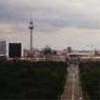 East and West
Berlin.
East and West
Berlin.
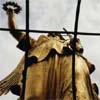
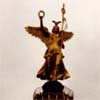 The Victory Column.
The Victory Column.
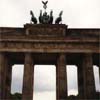 The Brandenburg
Gate.
The Brandenburg
Gate.
 Construction sites
are everywhere in the old East Berlin...
Construction sites
are everywhere in the old East Berlin...
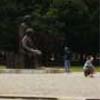 Marx and Engels
Place.
Marx and Engels
Place.
 One of the few
remaining sections of the wall -- right next to Potsdamer
Platz.
One of the few
remaining sections of the wall -- right next to Potsdamer
Platz.
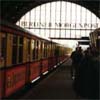 Alexanderplatz
Station.
Alexanderplatz
Station.
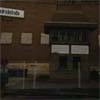 Checkpoint Charlie.
When I was there they had placed a smaller version of the
Statue of Liberty which would have been a much more unlikely
sight during the Cold War years.
Checkpoint Charlie.
When I was there they had placed a smaller version of the
Statue of Liberty which would have been a much more unlikely
sight during the Cold War years.
|





